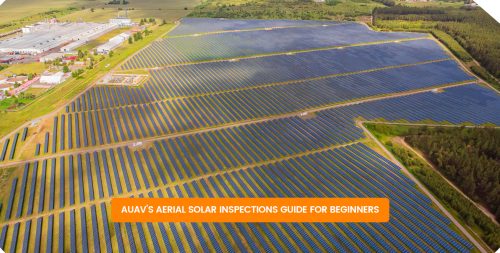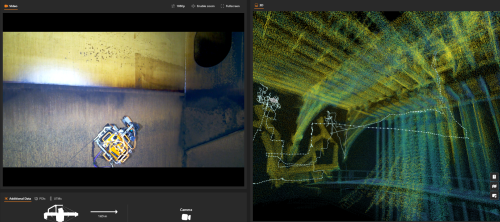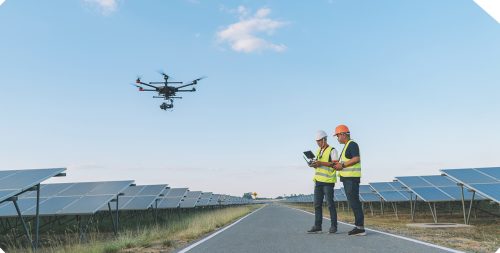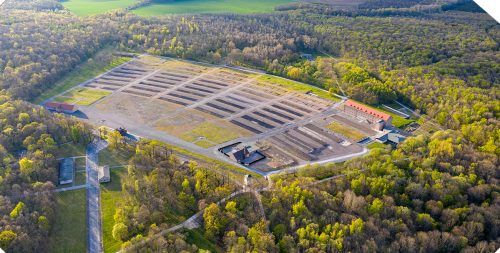Solar energy systems maintain their peak performance if subject to meticulous regular monitoring. However, this also represents substantial investments. The conventional ways of accessing and inspecting solar installations that typically involve manual checks and ladders are rapidly becoming obsolete. Recently, drone technology has emerged as a revolutionary aid in the assessment of solar installations. Aerial solar inspections have risen as the next big thing in the world of drones.
At AUAV, we understand that you, as a beginner, may struggle with the basics of using drone inspections for solar panels. This comprehensive guide explores everything beginners need to know about aerial solar inspections in 2025.
Why Choose Drone Inspections for Solar Panels in 2025?
The rise of drone technology has been a boon to several industries. The solar industry also has embraced the same for compelling reasons and has been leveraging it to eliminate safety risks that are otherwise associated with human inspectors climbing on rooftops or navigating around high-voltage equipment. This ensures protection of both inspectors and solar infrastructure. Aerial inspections by drones typically cover massive solar farms in a matter of minutes that would conventionally take hours. The efficiency is unmatched.
Typically, ground crews take days to identify issues with solar panels. It’s relatively cost-effective. On the contrary, with drone inspections, solar farms are newly discovering the meaning of cost efficiency. A single drone flight can capture detailed imagery of thousands of solar panels spread over vast farms and identify the issues within a matter of minutes. The precision of thermal imaging reveals performance issues from connection failures to micro-cracks, which are invisible to the naked eye.
Modern drones are capable of delivering repeatable and consistent results as they are equipped with advanced sensors. Their ability to inspect installations at optimal angles and access difficult terrain types ensures comprehensive coverage.
Are you ready to transform your solar maintenance?
Discover how professional drone inspections can save you time and money!
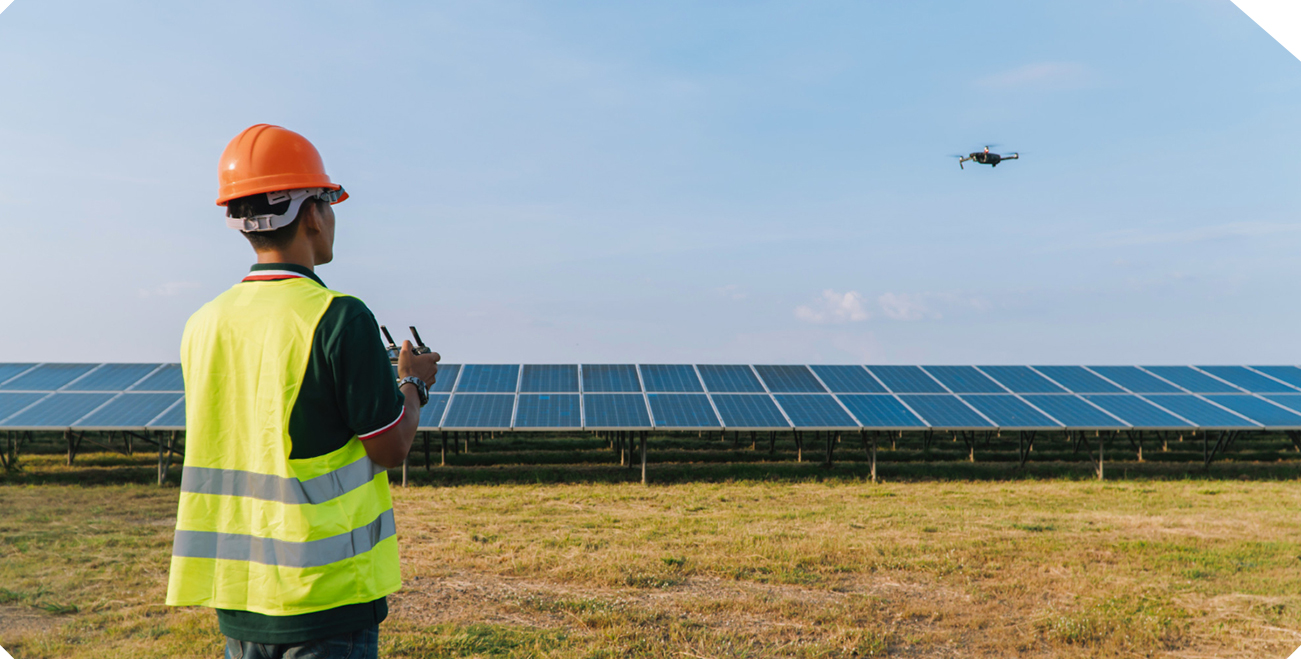
Essential Equipment Checklist Before the Flight
- Drone Platform
We recommend the use of commercial-grade quadcopters with 20–30 min flight times for efficiency and stable flight.
- Thermal Cameras
We suggest high-res sensors (of up to ±0.1°C accuracy) for accurately detecting solar panel hotspots.
- Visible Light Cameras
We recommend these cameras paired with thermal for thorough, clear visual documentation.
- Supporting Gear
We insist inclusion of additional batteries, calibrated temperature references, fast-write memory cards and ground control stations.
- Weather & Safety Tools
We recommend the use of weather instruments and back-up comms for optimal and safer operations.
- Software Needs
We suggest the employment of thermal analysis, flight planning and data management tools for accurate insight generation.
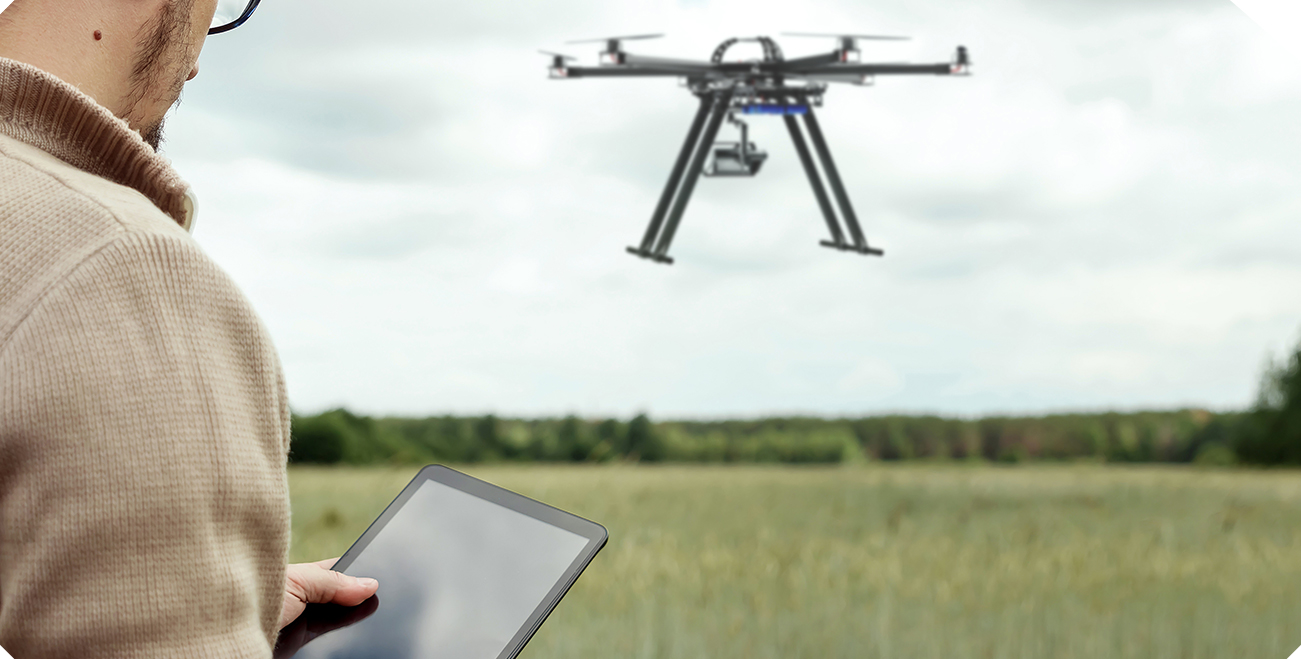
Pre-Inspection Planning and Safety Measures
Proper pre-inspection planning is the key to successful solar inspections. It eliminates the chances of problematic flights. Comprehensive site surveys represent the first step, followed by the identification of potential obstacles and restricted airspace. The next step is the identification of optimal launch locations.
As weather conditions tend to significantly impact the accuracy of thermal imaging, drone flights must be planned only when the solar loading is appropriate, wind is minimal, and the atmospheric condition is stable. Proper planning of the flight path ensures complete coverage of the site with maximum efficiency of drone battery.
When you choose autonomous flight modes, you would see reduced pilot workload to a significant extent. The key advantage here is the improved consistency of data. It’s a must to properly maintain your current aviation authority certifications and build clear communication protocols with site personnel involved in the same project.
Safety measures aren’t just limited to regulatory compliance. At AUAV, it’s advisable to conduct detailed pre-flight equipment checks, maintain visual observers whenever necessary and establish the necessary emergency procedures. Your understanding of local regulations also plays a crucial role in ensuring proper professional operations and preventing costly violations later.
Interested in transforming your solar monitoring strategy?
Book our expert aerial inspection services tailored to your facility’s needs!
Thermal Imaging vs Visual Inspection – What’s Better in 2025?
For effective solar inspections, both are essential. The former identifies heat anomalies and detects connection issues, electrical faults and cell-level defects often before any visible symptoms appear. The latter, however, excels at spotting the build-up of dirt, physical damage, structural concerns and shading.
Experts at AUAV recommend a combination of both to be used for the best outcomes. A combined approach uses thermal to locate issues and visual data to verify and provide context. Today, the market has dual-sensor drones that enable simultaneous capturing with improved accuracy and efficiency at reduced flight time.
Analysis and Interpretation of Drone Data
The identification of anomalies and hotspots from raw thermal data requires advanced software. Here’s when AI and machine learning technologies step in to enhance this. These technologies detect patterns that are tied to specific fault types, distinguishing the critical issues from normal variation.
Cloud-based platforms enable easy data sharing and automated reporting, supporting collaboration and long-term performance tracking. Tools like AUAV’s analysis systems turn complex imagery into actionable insights, guiding effective solar system maintenance and optimisation.
Future Trends in Drone Solar Inspections
- Autonomous flight systems mark a vital trend, reducing operational costs while improving data consistency.
- Advanced AI algorithms also represent a trend that promises real-time analysis capabilities for the identification of critical issues during flight operations.
- Enhanced sensor integration is another trend that combines thermal, visible and multispectral imaging in single platforms. These multi-sensor systems provide unprecedented analysis depth while maintaining operational efficiency.
- Another key trend includes cloud connectivity that enables immediate data transmission and analysis. This particular trend allows quick response to critical findings.
- Blockchain technology, a significant trend, is on its way to provide tamper-proof inspection records for insurance and warranty purposes.
Stay ahead of industry evolution with our cutting-edge drone inspection services!
How often should solar panels be inspected with drones?
Typically, commercial installations benefit from quarterly thermal inspections. Whereas, residential systems require annual assessments.
What weather conditions are best for thermal imaging?
The best weather conditions for thermal imaging include clear skies with minimal wind and peak solar production hours.
Can drones detect all types of solar panel defects?
Thermal imaging typically identifies electrical issues and hotspots. On the other hand, visual inspections capture soiling and physical damage.
How accurate are drone thermal inspections compared to manual methods?
Both the coverage and accuracy of drone thermal imaging are superior when compared with ground-based inspections.
What are the typical cost savings achieved using drone inspections?
Typically, organisations typically experience 60-80% cost reductions when compared with their usual, traditional manual inspection methods.

